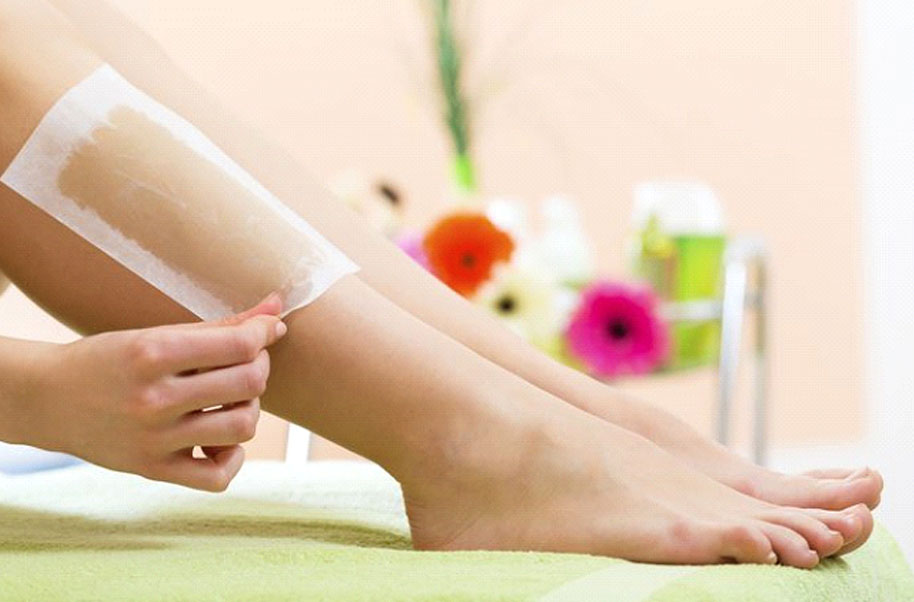Diseases
Waxiing
Waxing is a form of semi-permanent hair removal which removes the hair from the root. New hair will not grow back in the previously waxed area for four to six weeks, although some people will start to see regrowth in only a week due to some of their hair being on a different human hair growth cycle. Almost any area of the body can be waxed, including eyebrows, face, pubic area (called bikini waxing), legs, arms, back, abdomen, knuckles and feet. There are many types of waxing suitable for removing unwanted hair.
Strip waxing (soft wax) is accomplished by spreading a wax thinly over the skin. A cloth or paper strip is applied and pressed firmly, adhering the strip to the wax and the wax to the skin. The strip is then quickly ripped against the direction of hair growth, as parallel as possible to the skin to avoid trauma to the skin. This removes the wax along with the hair. There are different forms of strip waxing or soft waxing: heated, cold or pre-made strips. Unlike cold waxing, heated wax is spread easily over the skin. Cold waxing is thicker, which makes it more difficult to spread smoothly over the skin. Pre-made strips come with the wax on them, and they come in different sizes for different area uses.[1]
Stripless wax (as opposed to strip wax), also referred to as hard wax, is applied somewhat thickly and with no cloth or paper strips. The wax then hardens when it cools, thus allowing the easy removal by a therapist without the aid of cloths. This waxing method is very beneficial to people who have sensitive skin. Stripless wax does not adhere to the skin as much as strip wax does, thus making it a good option for sensitive skin as finer hairs are more easily removed because the hard wax encapsulates the hair as it hardens. The stripless waxing method can also be less painful.
Contraindications[edit]
The following factors are known to make those who are waxed more prone to "skin lifting," where the top layer of skin is torn away during waxing treatment:
taking blood-thinning medications;
taking drugs for autoimmune diseases, including lupus;
taking prednisone or steroids;
psoriasis, eczema, or other chronic skin diseases;
recent sunburn;
recent cosmetic or reconstructive surgery;
recent laser skin treatment;
severe varicose leg veins;
rosacea or very sensitive skin;
history of fever blisters or cold sores (waxing can cause a flare-up);
using trevino, tazaronene, or any other peeling agent;
recent surgical peel, microdermabrasion or chemical peel using glycolic, alpha hydroxy, salicylic acid, or other acid-based products.




Chitradurga
Seebara, Behind Indian Oil Petrol Bunk, Basavakumara Swamy Mutt, Chitradurga - 577504
Kunigal
K Huraliborsandra, Gowdgere Post, Dhomratti Temple Road, Kunigal, Tumakuru District. - 572130
Bengaluru
36, KG Gollarapalya, Bolare (P), Kanakapura Road, Bengaluru - 560082

